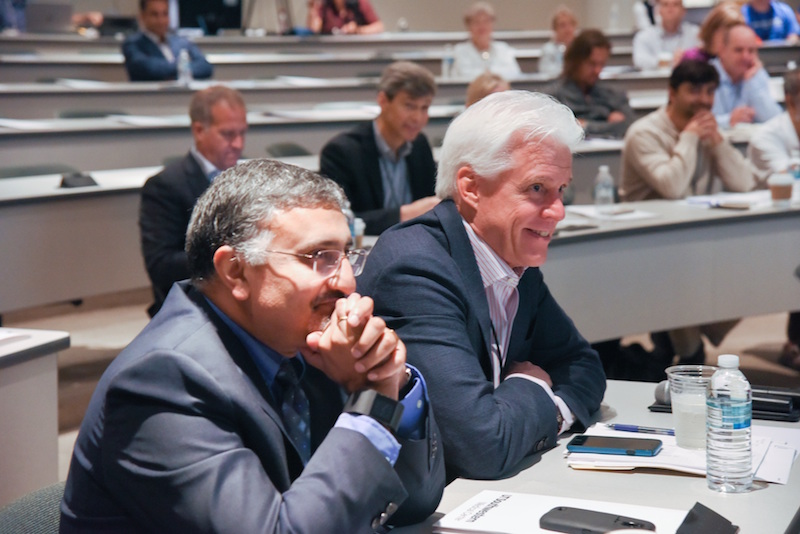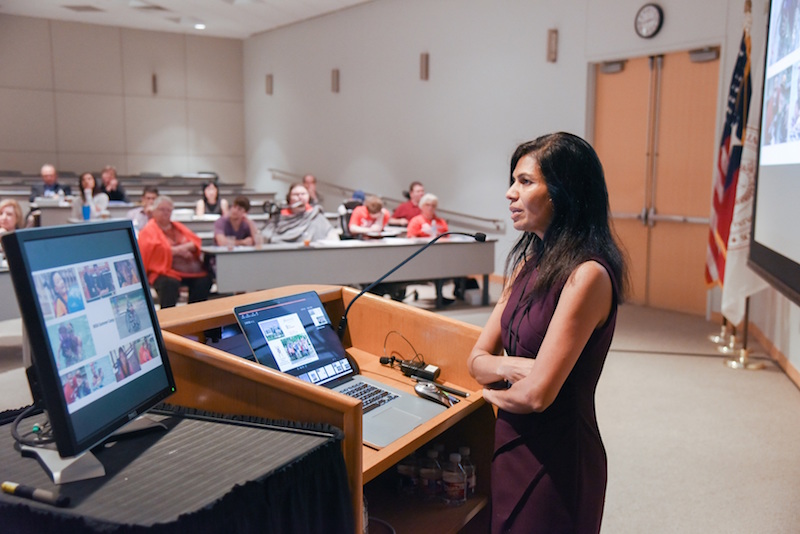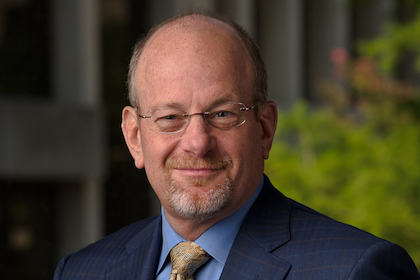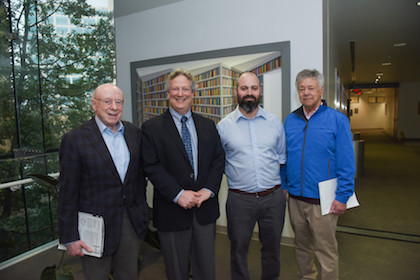Nation’s top muscular dystrophy leaders join patients to share ideas

UT Southwestern hosted top scientific and medical leaders in the field of muscular dystrophy for a two-day symposium with patients to address how to live with the muscular wasting disease, current standards of care, and the latest research advances in gene-editing techniques.
Leaders from six Paul D. Wellstone Muscular Dystrophy Research Centers – established by the National Institutes of Health to support muscular dystrophy research and care – attended the Sept. 28-29 conference.
“This meeting brought together leading scientists and clinicians from across the country, as well as patients and families, to learn about the latest breakthroughs in the quest for a cure for Duchenne muscular dystrophy,” said Dr. Eric Olson, Chairman of Molecular Biology, Director of the Hamon Center for Regenerative Science and Medicine, and Co-Director of the UT Southwestern Wellstone Center with Dr. Pradeep Mammen, Associate Professor of Internal Medicine.
“Ten years ago, there was very little hope in regards to treatment, let alone cures, for the majority of muscular dystrophy patients. Today, the field is developing many innovative therapies as well as potential cures for muscular dystrophy patients. It is truly a very exciting time for patients, scientists, and physicians alike,” said Dr. Mammen.

The symposium’s first day was designed for patients, their families, and advocacy groups, with presentations ranging from a motivational talk titled “Living your best life with muscular dystrophy” to the latest standards of care for children and adults. Promising research highlighted that day included CRISPR gene-editing studies led by Dr. Olson, which in preclinical models show great potential for curing a form of the disease that affects boys, Duchenne muscular dystrophy.
UT Southwestern researchers are using a technique called CRISPR/Cas9-mediated genome editing, which can precisely remove a mutation in DNA, allowing the body’s DNA repair mechanisms to replace it with a normal copy of the gene. This approach would permanently correct the defect in the gene.
The second day was aimed at research presentations by scientists from the six centers. The Wellstone Muscular Dystrophy program, named in honor of the late Sen. Paul D. Wellstone, includes Wellstone Centers at the University of Florida, University of Iowa, University of Massachusetts, University of Rochester, and University of Washington.
Dr. Olson holds the Pogue Distinguished Chair in Research on Cardiac Birth Defects, the Robert A. Welch Distinguished Chair in Science, and the Annie and Willie Nelson Professorship in Stem Cell Research.



